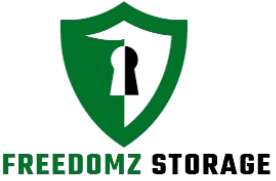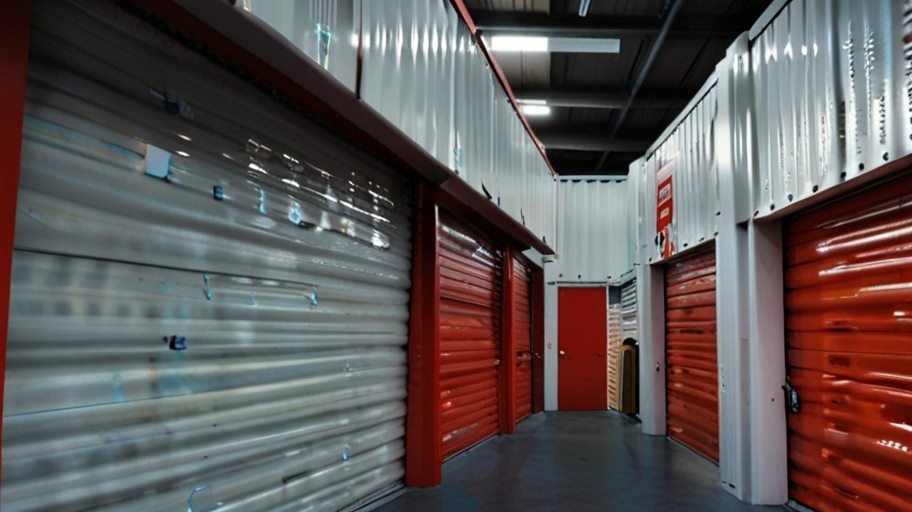Self Storage unit designs have evolved to prioritize utility and creativity in response to the growing need for storage options in today’s more congested society.
Knowing the subtleties of self-storage unit designs is crucial, whether you’re a company owner looking to build a self-storage facility or an individual looking for design ideas for personal storage.
You may create a storage area that increases efficiency and improves user experience by investigating several design concepts, plans, and rules.
This blog will explore the most recent developments and industry best practices for designing self-storage units, enabling you to plan for your upcoming project confidently.
The Value of Carefully Designed Self-Storage Units
The success of a storage facility is mainly dependent on the designs of the self-storage units. A well-designed storage unit may maximize the use of available space, boost customer satisfaction, and significantly increase the facility’s profitability.
Trends in storage design have changed in the last several years. Contemporary designs for self-storage units prioritize sustainability, adaptability, and cutting-edge technology.
For instance, many facilities are now adding automated lighting, climate control systems, and smart locks, improving user comfort and security.
Keeping abreast of these developments allows facility managers to stand out in a crowded market and draw on a broader clientele.
Innovative Storage Unit Designs
In terms of storage unit design ideas, originality is essential. Here are some creative storage unit design concepts to help you maximize your available space:
- Utilizing Vertical Space: One of the best methods to increase storage capacity is to utilize vertical space. Consider including shelves, racks, or even mezzanine levels within each unit rather than concentrating only on the floor surface. This method allows users to fit more goods into smaller spaces, increasing the usefulness and aesthetic appeal of small units.
- Flexible Partitioning: Another creative design concept involves using movable partitions within storage units. Thanks to adjustable dividers, users can reorganize their storage space as their demands vary. Business clients would especially benefit from this flexibility, as they might need to switch up their storage arrangements over time.
- Aesthetic Considerations: Although usefulness is essential, beauty shouldn’t be disregarded. Contemporary designs for self-storage units frequently have eye-catching features, including polished interiors, eye-catching facades, and distinctive color schemes.
Creating Powerful Design Plans for Self-Storage Units
There’s more to designing a storage unit than merely positioning items in a room. Self storage unit design plans should consider several things, such as unit sizes, accessibility, and security.
- Organizing for Different Unit Sizes: To meet the demands of a diverse clientele, a well-designed storage facility must provide a selection of unit sizes. The facility must be able to contain the contents of both individuals and households, no matter how many personal goods each customer is storing.
- Flow and Accessibility: Accessibility is crucial when designing a self-storage facility. Ensure the apartments have handy loading zones, spacious hallways, and enough lighting for easy access.
- Features related to security: Security is a significant concern for storage facilities, and your design plans should consider this. Include security elements in your design, such as alarm systems, secure access points, and surveillance cameras.
Designing a Self-Storage Facility: Important Things to Know
Beyond specific units, self storage facility design includes the site plan and building materials.
These more expansive architectural decisions may significantly impact the success of the facility.
Design and Layout: Your self-storage facility’s success is greatly influenced by its location and design.
Select a site that is well-visible from significant thoroughfares and easy to get to. Please consider the site’s layout, ensuring that it permits simple access to each unit and seamless visitor flow. Additionally, there should be enough room on the site for future growth.
Structure Materials and Construction:
The upkeep and longevity of your structure may be significantly impacted by the selection of construction materials, Such as long-lasting, low-maintenance, and weather-resistant.
Steel, for instance, is a common material for storage buildings because of its durability and strength.
To safeguard clients’ goods from high humidity and temperatures, consider adding climate control features and insulation.
Environmental Impact:
As sustainability gains importance, consider eco-friendly techniques while designing your self-storage facility.
These might incorporate rainwater collection systems, solar panels, and energy-efficient lighting.
In addition to lessening the facility’s environmental impact, these features can draw in eco-aware clients and lower operating expenses.
Following the Guidelines for Self-Storage Design
Following established self-storage design guidelines is crucial when creating a self-storage facility.
By following these rules, you may be confident that your facility complies with all applicable standards and is safe and functioning.
Verify that your design complies with regional fire safety codes, zoning rules, and accessibility standards, such as ADA compliance.
If these rules are broken, your project may be delayed, or you may be subject to expensive fines.
Guidelines for Space Efficiency:
A key component of self-storage design is maximizing space efficiency. Recommendations frequently include:
- Limiting unused space inside units.
- Arranging common areas and corridors optimally.
- Making the design permits the effective use of available land. Building a suc
- Applicable facility requires striking a balance between the necessity for functionality and space efficiency.
Optimizing the Layout of Self-Storage Designs
A self storage design layout may have a big impact on the smoothness of the business’s operation and the satisfaction of its patrons.
Flow and Navigation: Ensuring easy flow and navigation within the facility is critical to layout design. This entails having roomy, well-marked walkways, legible signs, and a sensible unit layout. Consumers should have no trouble finding their units, putting things in, and taking them out.
Future-Proofing the Design: When creating the layout, consider future growth or alteration. This innovative method can save money and time by allowing for adding more units, upgrading amenities, or reconfiguring areas without causing major disruptions.
In summary
Self Storage unit designs that cater to a wide range of clientele require creative and thoughtful designs for its self-storage units.
By implementing innovative design concepts, following fundamental rules, and fine-tuning the arrangement, you can construct a safe, effective, and visually appealing facility for clients.
Keeping up with design trends and best practices will help your self-storage facility stand out in the crowded market as storage needs grow. For more information about Self Storage unit designs visit Freedomz Storage
In the self-storage business, careful design is essential for building successful facilities, whether building new ones from scratch or renovating old ones.
FAQ
Q: What aspects need to be considered while creating a self-storage unit?
A: Think about flexibility, security, accessibility, and space usage. Improving functionality and user experience, including amenities like climate control, safe access points, and vertical storage alternatives, is critical.
Q: How do I maximize the space in a little self-storage unit?
A: When designing a storage arrangement, consider flexible partitioning and use vertical space using shelves or stacking systems. When space is used efficiently, it is possible to store more objects without packing the unit to capacity.
Q: Which contemporary styles are popular for self-storage units?
A: The utilization of modular designs, environmentally friendly materials, and cutting-edge technology like climate control and smart locks are examples of contemporary trends. These advances enhance the efficiency and aesthetic appeal of storage cabinets.
Q: Why is the design of self-storage units crucial to accessibility?
A: Customers may transfer things in and out of their units, easily reach their apartments, and quickly tour the facility when it is accessible. Good lighting, spacious hallways, and easy-to-load areas are all necessary for a satisfying user experience.
Q: What effects do design rules for self-storage have on facility planning?
A: Design principles guarantee adherence to laws, safety requirements, and best practices for space utilization. Following these rules minimizes possible problems during operation and contributes to creating an efficient, effective, and consistent storage facility with the law.

